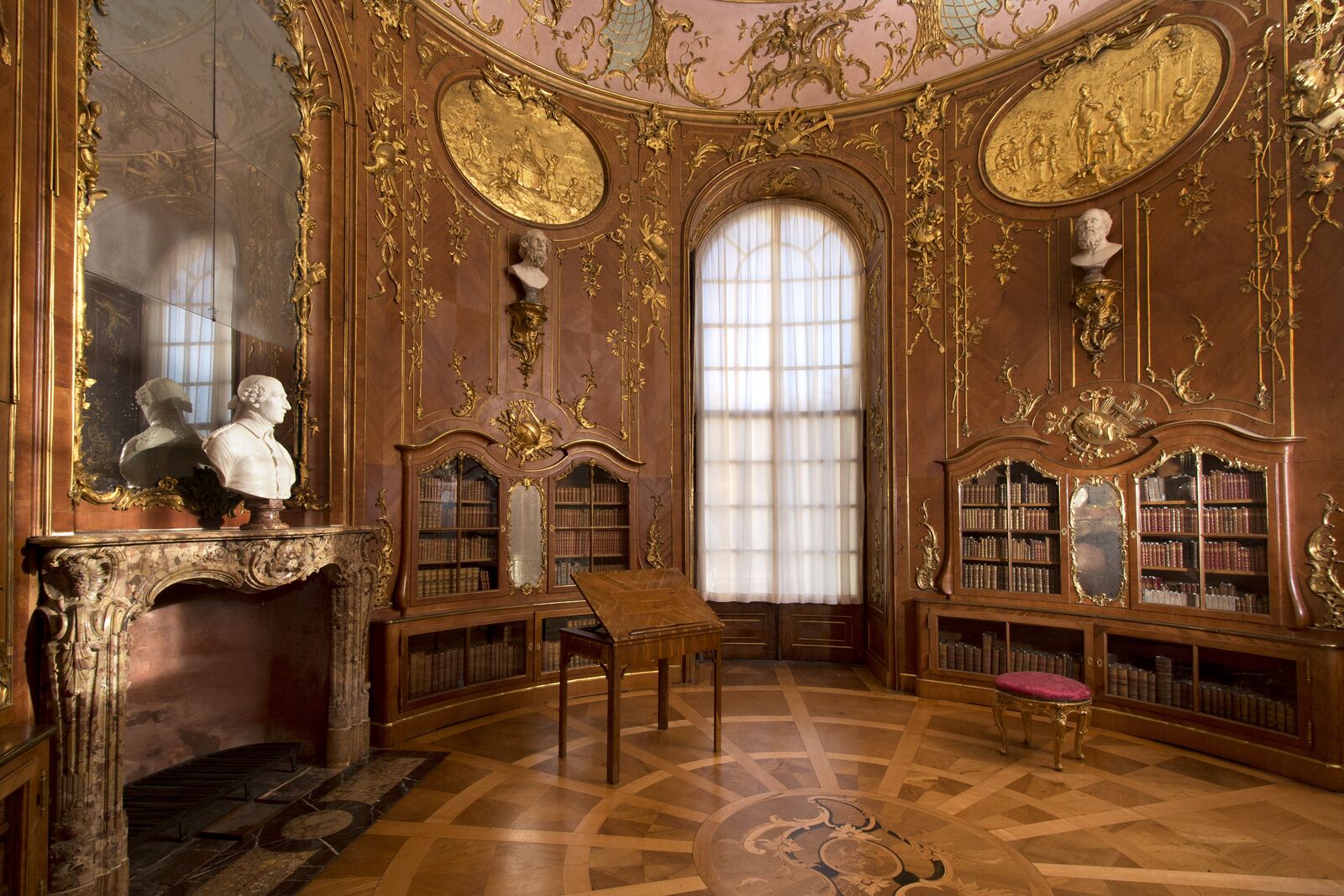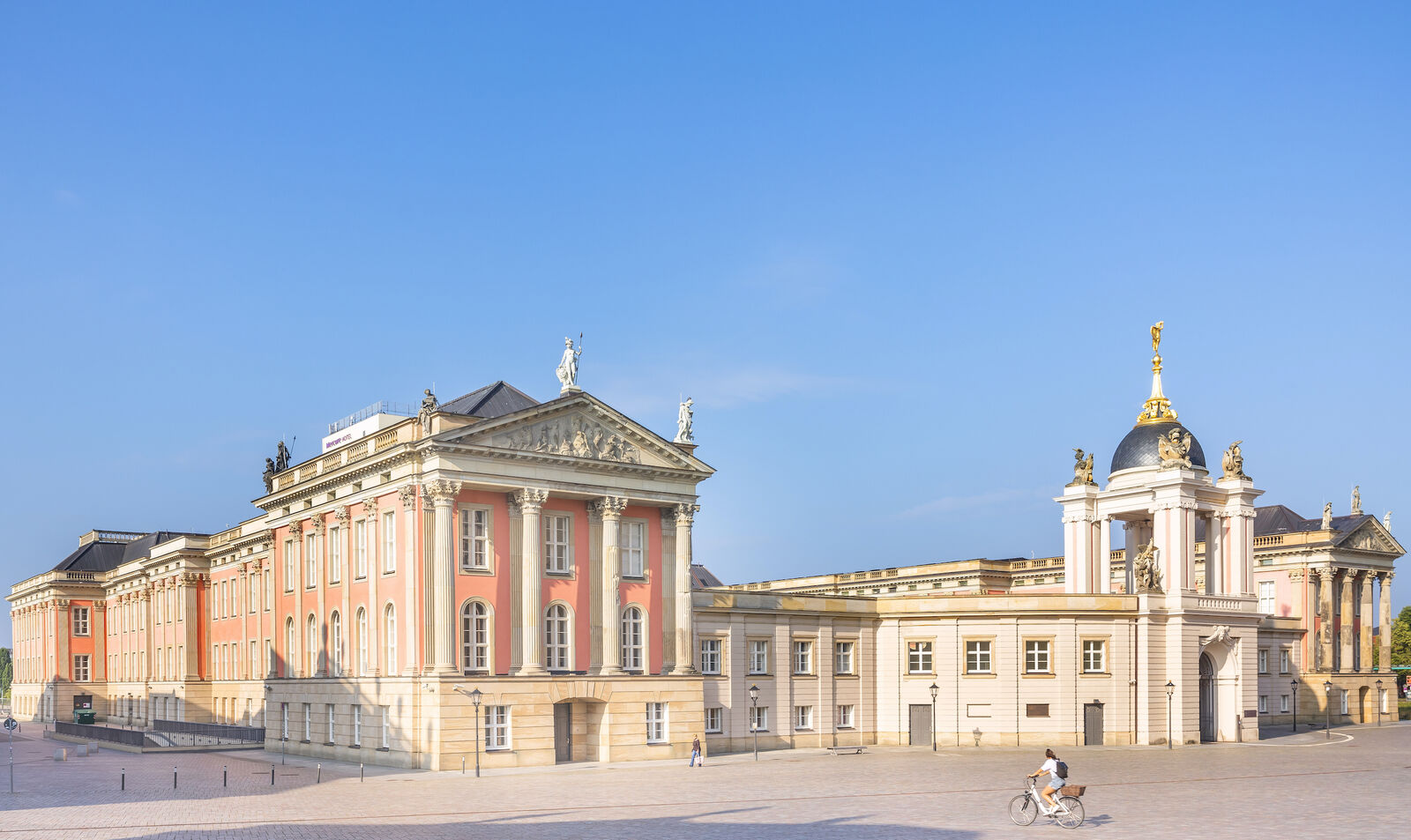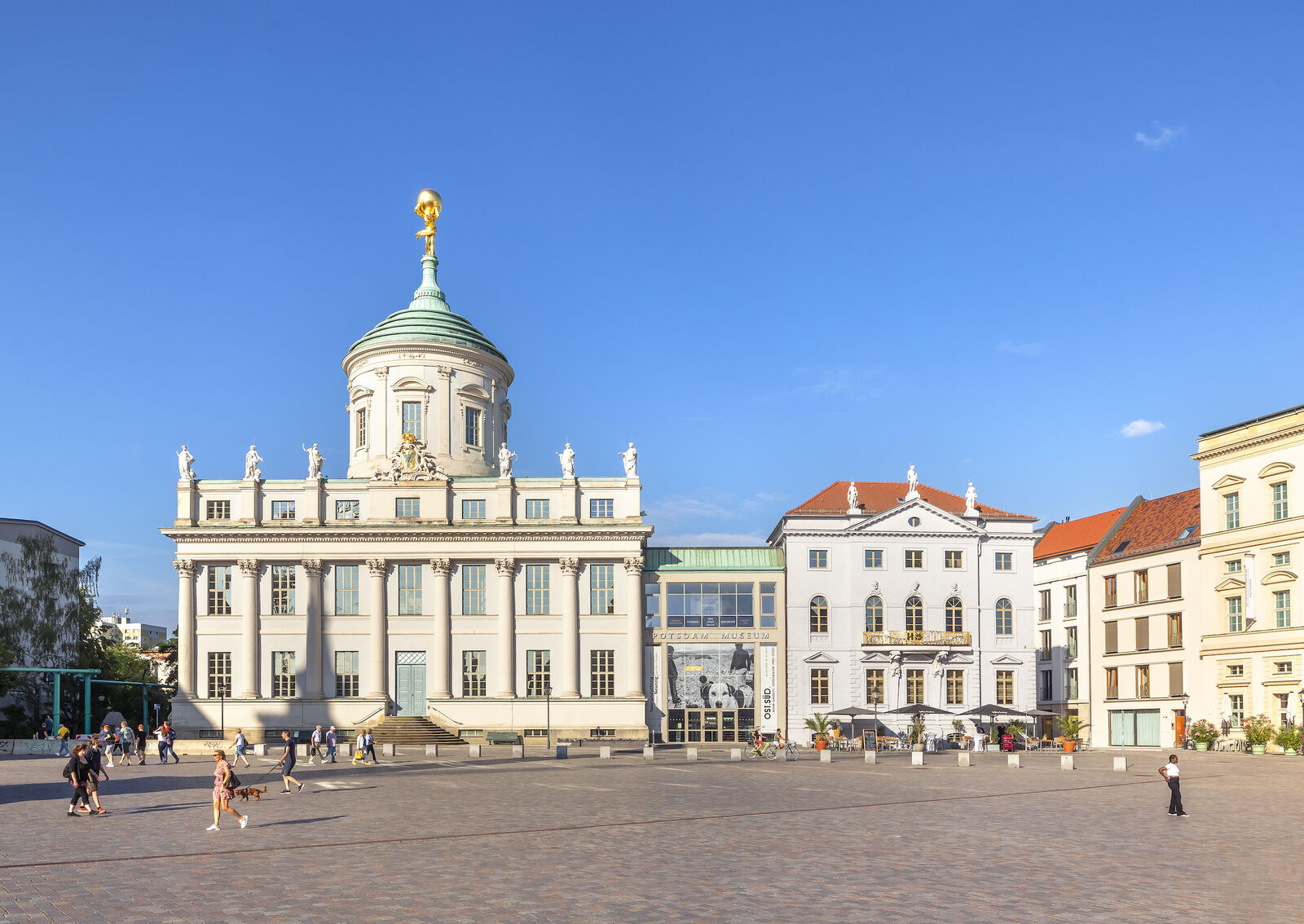
French Language and Literature / The Library of Sanssouci
In the 17th century, the Sun King Louis XIV had taken French courtly life to the highest pinnacle of culture and splendor. Since that time, French had established itself as the language of the European courts and the nobility. As a result, young princes and princesses were often reared by French governesses and tutors. The same was true of the crown prince Frederick,

David von Becker
Frederick's enthusiasm for France
Frederick's French tutors inspired him with a lifelong enthusiasm for the language and culture of his neighboring country. Until his confirmation in 1727, the prince was tutored by the Huguenot Jacques Duhan. Later, many letters from Frederick II bear witness to his profound attachment to his former teacher, even as an adult.
Throughout his entire life, Frederick preferred French to his native tongue, and spoke and read French better than German. Accordingly, he filled his libraries exclusively with books in French, and had works written in other languages translated into French. In Potsdam alone he established three libraries: one in the City Palace, one in Sanssouci, and one in the New Palace. The collection of each library was almost identical, so that the king had access to the same books in all of his palaces.
Frederick II insisted on a very specific type of binding and cataloguing system for his books. The volumes are predominantly covered in red or brown leather and are imprinted with gold lettering to indicate their location.

SPSG, Photo Leo Seidel
Sanssouci Palace: The Library of Frederick II
2,100 books in Sanssouci
The library at Sanssouci was especially notable. It occupied a round room at the end of the east wing that was accessible only from the king’s study and bedroom. He wanted to keep the space entirely to himself. Bookshelves with glass doors are set into costly cedarwood paneling. This library contained around 2,100 volumes, with predominantly ancient Greek and Roman authors, as well as French literature.
The presence of the French language in Potsdam is most conspicuous in the name of the summer palace: Sanssouci. The name is visibly inscribed on the garden side of the building. Even today, every inhabitant of the city is familiar with this name, though not everyone knows that it means “without worry.” The reason for the comma between “Sans” and “Souci” is an unsolved mystery to this day.
Many French words, such as Etage, Promenade, Omelett, or Kostüm, have found their way into the German language. These terms come from important areas of life such as the military, architecture, transportation, and the culinary arts as well as clothing—an indication of the kinds of professions, trades, and products that have come into Germany from France in recent centuries.
The Library of Sanssouci is one of the stops on the audio tour France in Potsdam, which was developed for the Barberini App on the occasion of the French Impressionists moving into the Barberini Museum. The audio tour invites you to discover around 25 stops with French influences that have helped shape Potsdam over the centuries. Simply download the free Barberini App and be surprised by the city's many French references.


